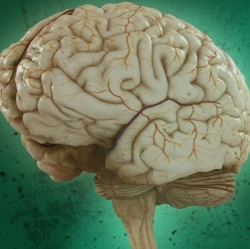
Detailed high resolution brain imaging has been made one hundred times faster. Stanford University researchers who developed the new method CLARITY to see the brain in greater detail said that it could mark a new era of rapid brain imaging.
This would allow researchers to see in much greater detail not only how parts of the brain interact on a cellular level but also to better understand those interactions across the entire brain. It allows for three-dimensional visualization that is both granular and wide enough to encompass the entire brain. Said Sanchez, “Traditionally, with the optogenetic technique, you really don’t have the structure to go along with the activation. That’s why the Neuro-FAST program is so exciting.”
DARPA Neuro-FAST project builds off of the recently developed CLARITY process, as well as recent discoveries in genetics, optical recordings, and brain-computer interfaces. By combining all four areas, Neuro-FAST seeks to allow researchers to individually identify specific cell types, register the connections between organizations of neurons, and track their firing activity using optical methods in awake, behaving subjects.
Neuro-FAST researchers must overcome the dual challenges of achieving single-neuron resolution while simultaneously being able to analyze activity from large numbers of neurons to acquire detailed modeling of the dynamic wiring of neural circuits that cause behavior. Such models would then be coupled with brain activity in real-time to better understand how brain processes work. Neuro-FAST envisions development of novel optical methods to enable the necessary recording.
The data generated by this process would be unlike any previously produced by the neuroscience community and would feed a growing body of knowledge about brain function and form. In addition to fundamental rodent research already underway, Neuro-FAST will expand the processes to non-human primate brains and whole-organ human tissue samples from existing repositories to create a deep understanding across higher-order mammals.
If successful, Neuro-FAST will support pioneering research into brain function over a wide range of spatial and temporal scales to better characterize and mitigate threats to the human brain and facilitate development of brain-in-the loop systems to accelerate and improve functional behaviors.
